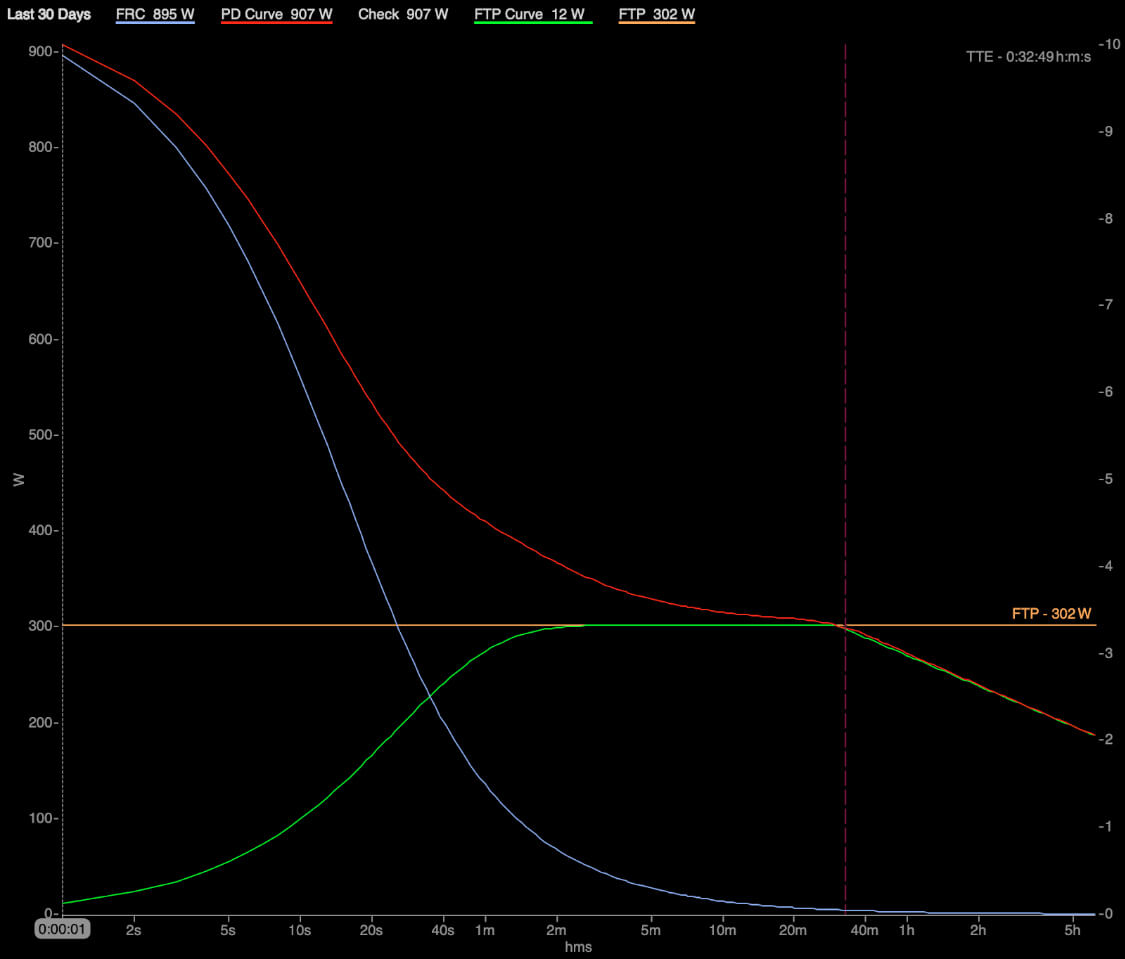In line with what I wrote in a previous article about analysis of power files generated in training and key concepts, I continue specifying what they are so that you can correctly evaluate your abilities as a cyclist.
To present them in a coherent way, I will order them more power unless. That is, from the power generated by the alactic anaerobic processes to the aerobic capacity.
- PMAX. This is the maximum power value that a rider can generate. For obvious reasons it can only be held for a short period of time, maximum 5 seconds. The limiting factor is due to the consumption of ATP and PC, responsible for feeding our muscles to be able to carry out an exercise of such intensity. When they run out, the intensity drops automatically. It would correspond to the known alactic anaerobic resistance. That is, without the presence of oxygen but being of such a short duration, lactate is not generated.
- FRC. This is the amount of work that can be done on top of FTP. It would correspond to the lactic anaerobic mechanisms (presence of lactate) and exercises at the limit of maximum oxygen consumption.
- FTP. This is the maximum power value that we can sustain for one hour. It is the jewel in the crown for climbers and time trialists. High values relative to weight are essential to climb a mountain and make a KOM. High absolute values are key to making a KOM on a flat segment. It corresponds to aerobic power exercises, being of great importance for a high performance to have a high oxygen consumption and an anaerobic threshold as close to it.
- TTE. This is the time that the highest possible power can be sustained in a nearly steady state without fatigue. At the moment when it begins to decline, that is where the limit is located. Improving the FTP allows to increase the level of performance but also improve the TTE. And it is the great unknown.
- STAMINA. It gives an idea of the level of resistance to fatigue of a cyclist. That is, what percentage below the FTP is it capable of sustaining over time. The improvement of this value requires an investment of time, since it is based on hours that it is improved.
To finish, I enclose a last graphic in which you can see all the concepts previously exposed with the addition of being able to see where the energy that allows you to make the effort comes from. I’ll leave this for a new article.

Key concepts in the power curve of an athlete

